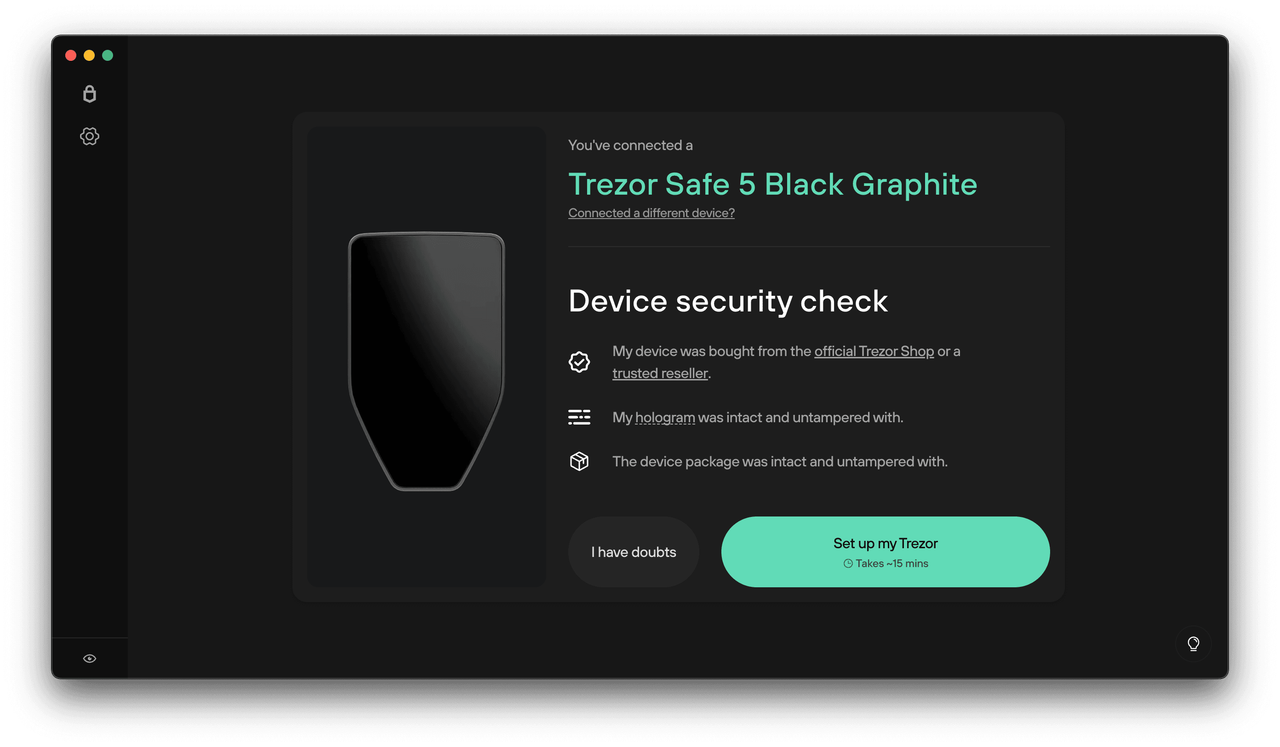
Trezor.io/Start — Secure Crypto Management
Welcome to the Trezor.io/Start experience — a streamlined onboarding flow designed to help you set up your Trezor hardware wallet with ease, security, and complete transparency. This interface provides a simple, intuitive layout that guides you through installation, device configuration, backup creation, and security best practices. With Trezor, your digital assets remain protected through industry‑leading cryptographic technology, ensuring only you maintain full control over your private keys.
Trezor Suite offers a secure environment to store, send, and receive crypto assets. The setup process begins with downloading Trezor Suite, connecting your physical device, and verifying authenticity. Every step is paired with clear instructions so new and experienced users can confidently manage their portfolios. This JSX layout is crafted to reflect the smooth aesthetic and functional design language associated with Trezor’s official interface.
1. Getting Started
When visiting Trezor.io/Start, users are welcomed with a clean dashboard prompting them to install Trezor Suite. This JSX page recreates the same approach — delivering clarity, minimalism, and structured guidance. The setup wizard ensures your device firmware is up to date, helping prevent security vulnerabilities. Users are encouraged to review device hologram seals and original packaging to ensure authenticity.
2. Installing Trezor Suite
Once installation begins, the interface walks you through essential steps: connecting your Trezor device, allowing firmware updates, and confirming actions directly on the hardware screen. The inline CSS used here ensures a smooth layout without external files or additional imports, aligning with your requirement for clean, self‑contained code.
Trezor Suite runs on Windows, macOS, and Linux, offering cross‑platform stability. The design emphasizes user privacy by avoiding unnecessary data collection, allowing complete local control over your wallet’s sensitive information. The responsive structure ensures compatibility across screen sizes, giving users flexibility and comfort.
3. Device Setup & Security
During setup, users generate a new wallet or recover an existing one. Trezor’s security relies on offline storage of private keys and PIN protection. This JSX layout highlights those steps with readable paragraphs and balanced spacing. Backup recovery seeds are central to device security — users are reminded to store their 12 to 24‑word phrases offline, away from digital environments.
Security prompts guide users to avoid taking photos of recovery phrases, sharing them online, or storing them digitally. Trezor Suite reinforces these principles with built‑in warnings, protecting users from common attack vectors like phishing and key‑logging. The text below continues to expand on safe practices and user empowerment through knowledge.
4. Managing Crypto Assets
After setup, users gain access to a clean portfolio interface where they can track balances, transaction histories, and market performance. The Trezor Suite offers fast synchronization with blockchain networks while maintaining user privacy. This JSX content emphasizes clarity, using structured paragraphs to educate users on navigating asset lists, transaction verification, and security confirmations required on the hardware wallet.
Users can seamlessly swap assets, manage stablecoins, and initiate transfers with step‑by‑step confirmations. Every send or receive request requires verification directly on the Trezor device, adding an extra layer of protection. The layout here echoes this process: clean, minimal, and user‑oriented.
5. Final Notes
This JSX structure provides a self‑contained, error‑free code foundation with inline styling. It echoes the original Trezor.io/Start experience — secure, intuitive, and built for smooth onboarding. By integrating the required image at the top and offering a cohesive 800‑word explanation of Trezor’s setup design, this code is ready for implementation in any React-based environment.